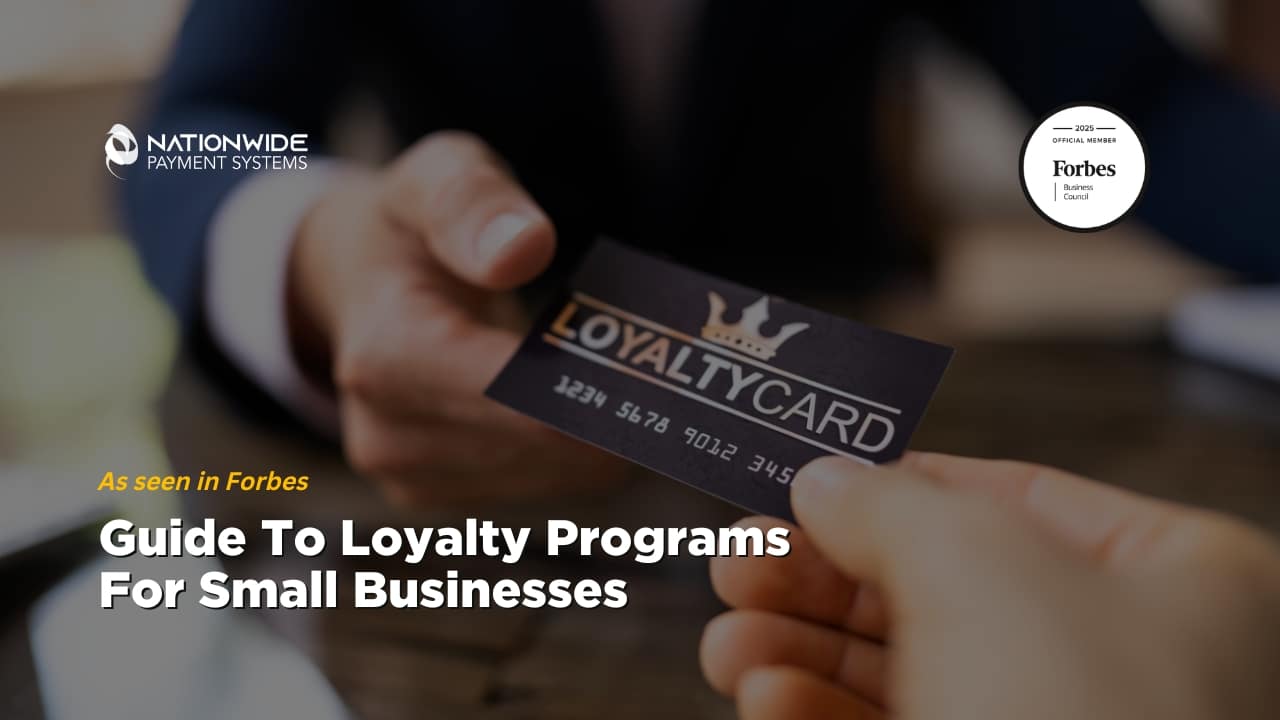Previously featured on Forbes Business Council
Guide To Loyalty Programs For Small Businesses
Loyalty is a key driver for any enterprise that depends on repeat business. Restaurants, retail stores, salons and a wide range of businesses leverage loyalty programs to keep customers coming back and transform occasional customers into frequent shoppers. Switchfly outlines how these programs have evolved from punch cards, trading stamps and airline miles into dynamic, tech-driven solutions.
The company traced original loyalty programs to the late 19th century when merchants first noticed loyalty’s traffic-building potential. Over time, programs evolved alongside other technologies, making redemption more efficient and eliminating the need to store physical stamps and punch cards.
Loyalty programs today are highly personalized and data-driven, providing unique rewards tailored to individual preferences. I want to outline how to choose and best take advantage of these programs as they continue to evolve and drive further innovation in customer retention.
Utilizing Loyalty Programs
Loyalty programs have the ability to provide participating merchants with valuable insights into customer preferences and behavior. Merchants can use these insights to better understand customer demographics, spending habits and transaction histories. With this, you can create targeted campaigns and offers that reward spending thresholds, shopping frequency and other profitable shopping activities.
These days, small and midsize businesses (SMBs) can design the kinds of loyalty programs that were once only available to airlines and big box retailers. Advances in technology have democratized access to points programs, frequency and membership programs, special occasion awards and embedded card-based loyalty programs.
With the growth of loyalty programs built into popular point-of-sale (POS) systems, SMBs can design incentives that award points for every dollar spent with extra bonuses when customers meet certain spending thresholds or patronize their businesses on traditionally slow days. You can also reward loyal customers with personalized holiday and birthday offers that feature free desserts and various loss-leader products. My advice, when evaluating different models, is to find a loyalty program that is compatible with your business and can adapt to changing trends.
Card-based programs, embedded into POS systems and terminals, can provide instant rewards during the checkout process. But like with Target Circle or Marks & Spencer, many card-based programs are being replaced by simpler solutions that recognize customers by their phone numbers instead of key fobs and cards. It is also important to stay in control of your customer data. If you allow third-party loyalty providers to use your customers’ profiles, preferences and transaction histories, you are ultimately allowing these companies to own the customer relationships.
For best results, educate and involve your sales associates because they will be the ambassadors of your loyalty and rewards programs. Make sure they ask customers if they are enrolled in your loyalty program; have them recognize and reward enrolled customers. I recently dined at a restaurant where the wait staff was not aware of a program in which I had enrolled. That was not a great look for the business.
Be Exceptional
Remember loyalty’s golden rule: Customers are most likely to participate in loyalty programs with businesses they love. I am no exception. My favorite Greek restaurant rewards me with frequency discounts and $10 off with free dessert on my birthday, which is great. Apart from these incentives, it’s the food and service that keep me coming back.
Costco is another personal favorite example; the discounts I receive throughout the year more than cover my membership fee. Places that I don’t frequent will push notifications now and then, offering freebies just to stay in touch and get my information. This can be an effective customer acquisition strategy since it costs more to get a customer than to keep one.
Websites occasionally offer loyalty programs; the best ones are easy to use. I like to see and redeem available points when ordering coffee or food online or getting a free cookie with lunch. You can use technology platforms to automate and adapt these functions as you evolve your rewards programs to amaze and delight your customers.
Choose Technology Wisely
Every business must choose tech-driven loyalty solutions that fit their environments. Point-of-sale loyalty solutions tend to be basic but can be upgraded with various add-ons to create a more robust customer experience. SMBs compete with major platforms like Toast and Square, which share customer phone numbers across their entire networks. I find it’s best to look for technology after you have chosen a particular loyalty and rewards program. This will help you understand how the technology can support your strategies for cultivating loyal and local clientele.
Lastly, I find that execution is more important than the type of technology you choose. Look beyond the bells and whistles to your main objective, which is winning over your audience. Avoid oversharing by sending out too many texts and emails in a short period of time. Aggressive and “creepy” communications may cause customers to block you or report your messages as spam.
With a bit of due diligence, smart technology and the right balance of engagement and privacy, I think you and your customers can forge great loyalty programs and happy, long-term relationships.
Previously featured on Forbes Business Council
CLICK HERE TO FIND MORE ABOUT OUR PROGRAMS
FAQ: Frequently Asked Questions
Why should small businesses implement a loyalty program?
Loyalty programs help businesses increase customer retention, boost repeat sales, and strengthen brand loyalty, leading to long-term growth.
What types of loyalty programs work best for small businesses?
Popular options include point-based rewards, tiered memberships, referral incentives, and exclusive discounts, depending on the business model.
How do loyalty programs improve customer engagement?
By offering personalized rewards and incentives, businesses can encourage customers to return more frequently and interact with their brand.
What are the challenges of running a loyalty program?
Businesses must manage costs, customer participation, and program effectiveness while ensuring rewards remain valuable and appealing.
How can small businesses measure the success of a loyalty program?
Tracking customer retention rates, purchase frequency, and overall revenue growth helps determine the program’s impact.












